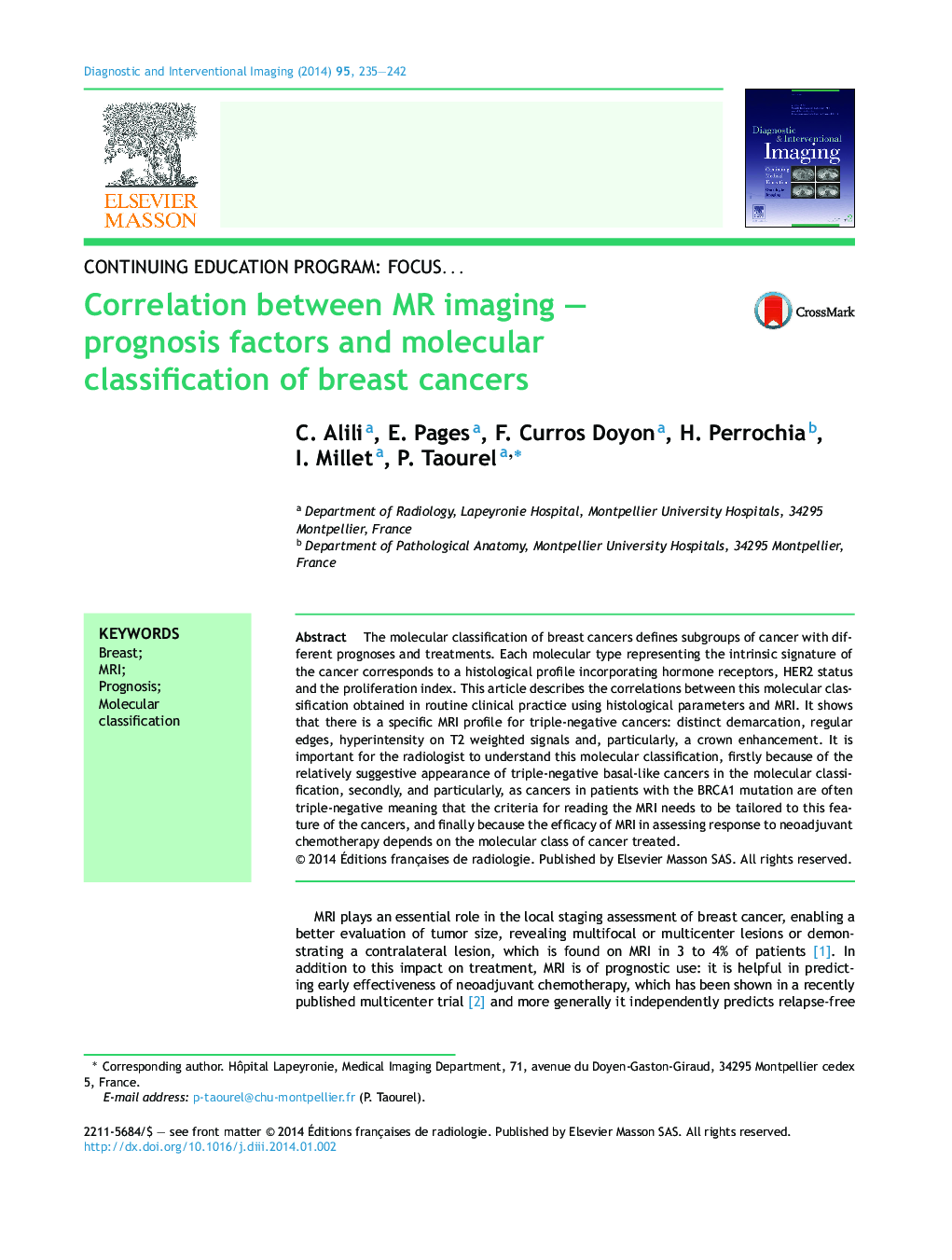| Article ID | Journal | Published Year | Pages | File Type |
|---|---|---|---|---|
| 2725788 | Diagnostic and Interventional Imaging | 2014 | 8 Pages |
The molecular classification of breast cancers defines subgroups of cancer with different prognoses and treatments. Each molecular type representing the intrinsic signature of the cancer corresponds to a histological profile incorporating hormone receptors, HER2 status and the proliferation index. This article describes the correlations between this molecular classification obtained in routine clinical practice using histological parameters and MRI. It shows that there is a specific MRI profile for triple-negative cancers: distinct demarcation, regular edges, hyperintensity on T2 weighted signals and, particularly, a crown enhancement. It is important for the radiologist to understand this molecular classification, firstly because of the relatively suggestive appearance of triple-negative basal-like cancers in the molecular classification, secondly, and particularly, as cancers in patients with the BRCA1 mutation are often triple-negative meaning that the criteria for reading the MRI needs to be tailored to this feature of the cancers, and finally because the efficacy of MRI in assessing response to neoadjuvant chemotherapy depends on the molecular class of cancer treated.
